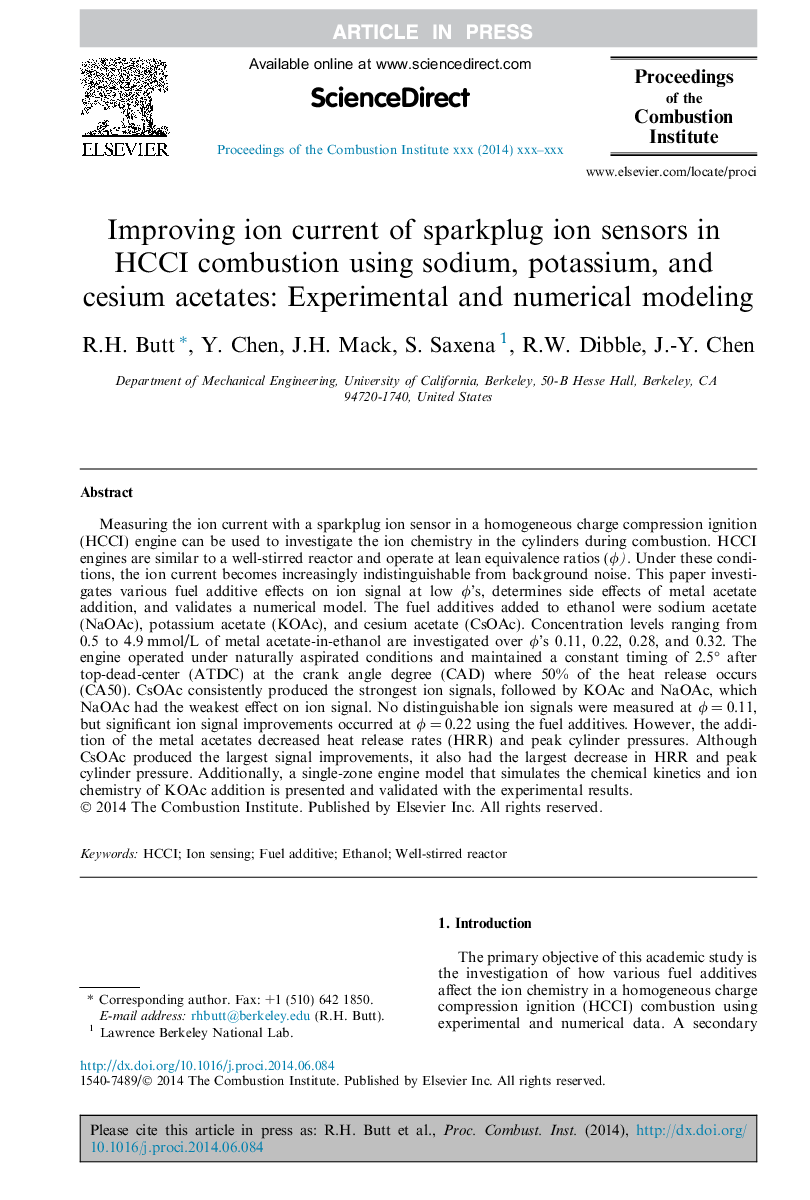| Article ID | Journal | Published Year | Pages | File Type |
|---|---|---|---|---|
| 4915565 | Proceedings of the Combustion Institute | 2015 | 9 Pages |
Abstract
Measuring the ion current with a sparkplug ion sensor in a homogeneous charge compression ignition (HCCI) engine can be used to investigate the ion chemistry in the cylinders during combustion. HCCI engines are similar to a well-stirred reactor and operate at lean equivalence ratios (Ï). Under these conditions, the ion current becomes increasingly indistinguishable from background noise. This paper investigates various fuel additive effects on ion signal at low Ï's, determines side effects of metal acetate addition, and validates a numerical model. The fuel additives added to ethanol were sodium acetate (NaOAc), potassium acetate (KOAc), and cesium acetate (CsOAc). Concentration levels ranging from 0.5 to 4.9 mmol/L of metal acetate-in-ethanol are investigated over Ï's 0.11, 0.22, 0.28, and 0.32. The engine operated under naturally aspirated conditions and maintained a constant timing of 2.5° after top-dead-center (ATDC) at the crank angle degree (CAD) where 50% of the heat release occurs (CA50). CsOAc consistently produced the strongest ion signals, followed by KOAc and NaOAc, which NaOAc had the weakest effect on ion signal. No distinguishable ion signals were measured at Ï = 0.11, but significant ion signal improvements occurred at Ï = 0.22 using the fuel additives. However, the addition of the metal acetates decreased heat release rates (HRR) and peak cylinder pressures. Although CsOAc produced the largest signal improvements, it also had the largest decrease in HRR and peak cylinder pressure. Additionally, a single-zone engine model that simulates the chemical kinetics and ion chemistry of KOAc addition is presented and validated with the experimental results.
Keywords
Related Topics
Physical Sciences and Engineering
Chemical Engineering
Chemical Engineering (General)
Authors
R.H. Butt, Y. Chen, J.H. Mack, S. Saxena, R.W. Dibble, J.-Y. Chen,
